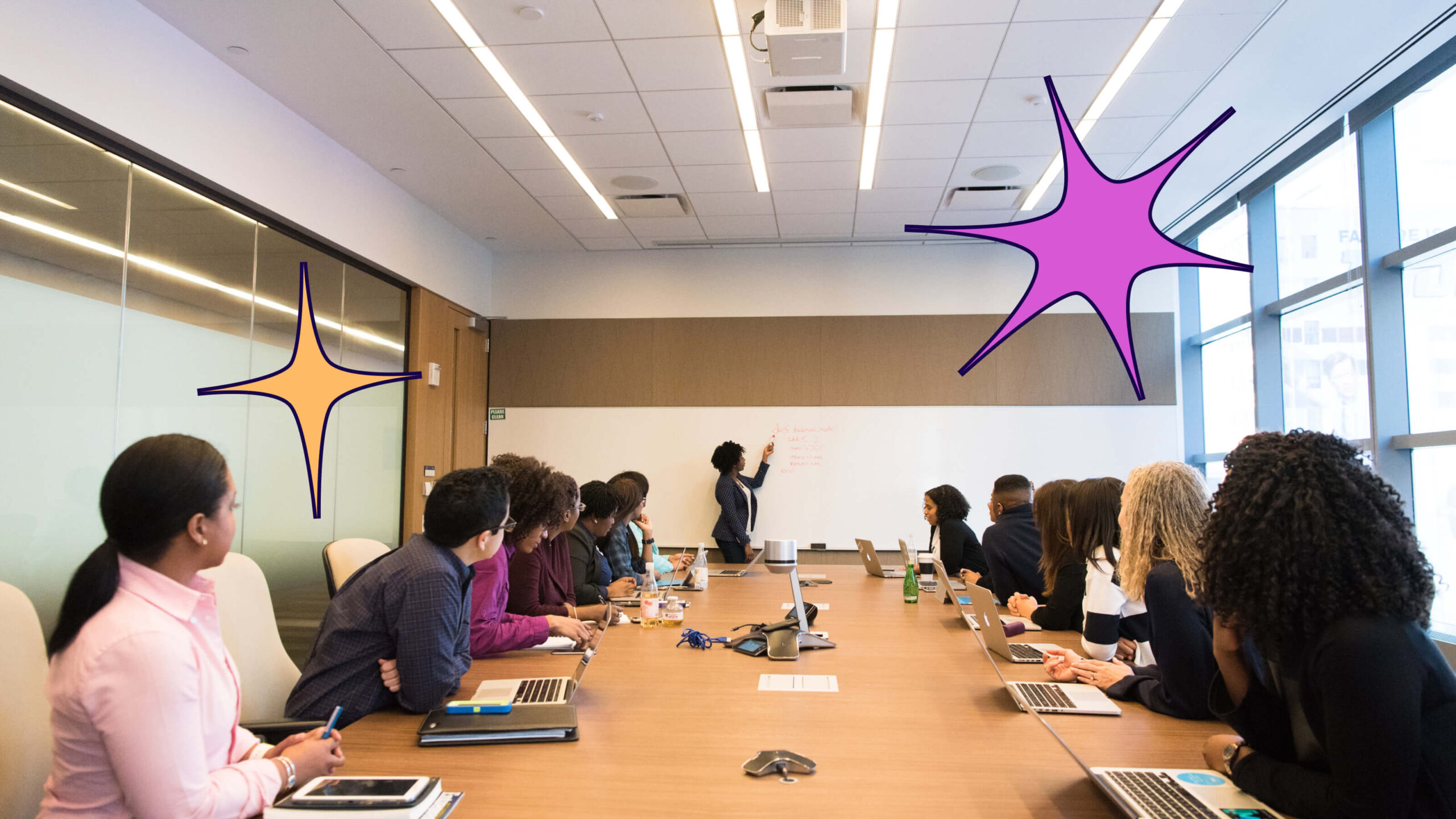3 tips for building better employee apps, from leading enterprise organizations
Today, it’s not enough to focus solely on the customer-facing aspects of your product experience. The most successful companies also invest in their employees’ digital experiences, and take strides to ensure internal users feel empowered to make the most of the tools they rely on every day.
Making your digital tools easy to use doesn’t just create goodwill amongst your employees. Prioritizing your internal users’ experiences and giving them the right level of onboarding, training, and support they need means you’ll be able to spend IT dollars more efficiently, drive increased productivity across your workforce, and position your brand as a top player in a highly competitive job market. Win, win, win.
Our “Drive workplace efficiency” breakout track at Pendomonium 2023 featured content packed with strategies for improving internal processes and workflows, driving adoption of employee-facing tools, and maximizing the value of your tech investments. We rounded up the top tips from a few speakers in this track—leaders from Red Hat, Zillow, and Pendo—so you can start building better digital experiences for your employees, too.
Tip 1: Use product analytics to get closer to your users – Zillow
Product analytics has a critical role to play in enabling enterprise organizations, in particular, to stay nimble and competitive in a rapidly evolving market. “Despite all their resources, strong leadership, and investments in tech portfolios, enterprise companies often get disrupted by startups,” said Steven Washington, a senior product manager at Zillow. “One potential reason this keeps happening is that leaders lack a true understanding of user needs when they envision their products.”
Washington explained that using product analytics is the best way to prevent siloed or overly politicized product decisions—and similarly, the best way to improve productivity and ROI on tech spend. He described product usage data as “the compass and the tool for informed decision-making . . . a way to tell a story about how people are using your products so that you can understand how to improve their experience.” During his session at Pendomonium, Washington outlined how Zillow’s data-driven approach, powered by Pendo Analytics, has enabled the team to dig deeper into employee behaviors and pain points, and foster a practice of human-centered solution design.
Increasing operational efficiency and tech ROI
He explained that using product analytics is critical in the Zillow product team’s ability to build internal business applications that enhance operational efficiency and productivity. “[Product analytics has helped us] foster user engagement and reduce context switching,” he shared.
Washington also noted that using product data has empowered the product team to be more objective and push back on asks for one-off features that don’t align with Zillow’s broader strategy. “A common problem we see is internal stakeholders [coming to us and] saying, ‘I want this thing because I saw it on Netflix last night’,” Washington said. But this kind of anecdotal feedback isn’t actionable or scalable for the product team, and often doesn’t reflect the challenges employees are actually facing in the tools they use at work each day. Now, data guides every decision the product team makes—ultimately increasing employee satisfaction and the efficacy of Zillow’s tech stack.
Eliminating bias and going beyond “gut feeling”
Finally, Washington also noted that product analytics allows his team to address and mitigate bias. “We can test whether a new feature benefits multiple user groups or cohorts of users—instead of just one,” he said. “If we solve the needs of one person, that opens floodgates—[and then] we have to solve everyone’s problems. That’s not scalable, nor is it the right way to approach solution design.”
Tip 2: Create a digital adoption Center of Excellence (CoE) – Red Hat
When it comes to rolling out new tools across the enterprise, having a cohesive strategy—backed by strong leadership—is critical to driving meaningful adoption. That’s where a digital adoption Center of Excellence (CoE) comes into play.
During her Pendomonium session, Cheryl Coleman (Senior Manager, Digital Adoption and Robotic Process Automation at Red Hat) detailed why Red Hat made the decision to set up a CoE, anchored by the digital adoption initiatives her team drives through Pendo.
Rolling out new tools across the enterprise
Several years ago, Red Hat made the decision to replace all of their legacy HR systems with Workday. This was the driving force behind establishing their Digital Adoption CoE. “[With the Workday deployment, we needed] just-in-time enablement to support about 16,000 internal associates, consultants, and contractors—covering over 70 business processes,” Coleman explained. “We wanted to establish operational excellence . . . We wanted to establish a mechanism for service delivery. And we wanted to explore how we could enable others in the organization to be force enablers for our team,” she said.
Coleman and her team used Pendo In-app Guides to create in-app onboarding, enablement, and ongoing support for Red Hat’s global employees—and Pendo Analytics to measure their progress. She noted that the ability to create targeted and tailored communications for specific user groups was particularly important to her team. “We want to make sure that all Red Hatters . . . see content geared just for them, not generic in-app content,” she said. “We’re looking to strike a balance between being helpful and unobtrusive.”
Ultimately, the CoE’s efforts to drive digital adoption in Workday were a success. “We were able to show really great engagement starting on day one . . . and impact productivity and efficiency over time,” said Coleman. Now, Red Hat uses Pendo in over 40 business-critical tools—including Salesforce and Concur.
Building cohesive employee experiences across the tech stack
By unifying all of Red Hat’s digital adoption efforts under the umbrella of their CoE, Coleman and her team are able to maintain governance over the look, feel, branding, and targeting of every in-app guide they create. Because Coleman’s team is involved in every digital adoption initiative within Red Hat, they are able to think holistically about their employees’ digital experiences, and build in-app guidance and enablement programs that feel like they’re part of a cohesive strategy. Plus, by using consistent elements like tooltips (which Red Hat calls “Show Me How” badges) and the Resource Center across all the tools in their stack, they’re helping employees self-serve the support they need and reinforcing desired behaviors.
Tip 3: Consider every stakeholder and personalize their experiences – Pendo
We also recently rolled out Workday across our entire organization here at Pendo. And we used our own platform to help drive adoption of the new tool.
In their Pendomonium breakout session, Kelli Dragovich (Former Chief People Officer & Industry Expert), Chad Holdorf (VP of Product), and Frank Kyler (VP, Total Rewards & People Operations) from the Pendo team* talked about how we used Pendo to facilitate a successful Workday implementation—as well as other ways we use Pendo to improve our team’s tool proficiency and productivity.
*If you’d like to hear directly from these three leaders about how we use Pendo to improve our employees’ experiences, be sure to register for this webinar.
Using Pendo to identify and address common employee pain points
Throughout the Workday implementation process, Kyler and his team used Pendo to field in-app surveys with Pendozers (Pendo employees) to understand what was working well, and what could be improved. “We found out that the change left some employees and managers feeling as though they couldn’t do things themselves—and if they could, feeling that it wasn’t always intuitive or easy,” Kyler noted.
So he and his team set out to build targeted in-app guidance and enablement, tailored for specific user personas and the jobs they were trying to get done. This included using lightbox-style in-app guides, pointing users in legacy systems to the right areas to complete similar tasks in Workday. They also used tooltips within Workday to guide users to ancillary tools like Greenhouse and ADP, as necessary. And they used Pendo Analytics to continually optimize these motions.
Check out this blog from Kyler to get all the details on how we used Pendo to successfully roll out Workday across our entire organization.
Interested in learning more about how you can use Pendo to improve your employees’ internal app experiences? Connect with our team and schedule your custom demo of our platform here.


